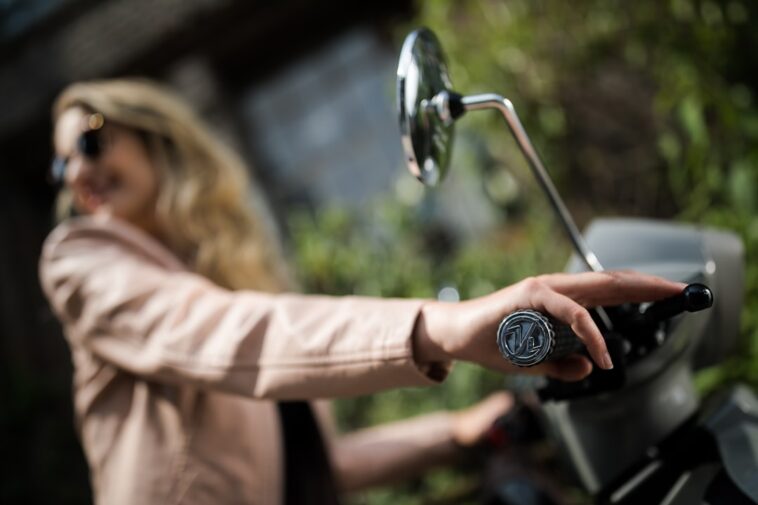If your brakes feel spongy or aren’t stopping you as quickly as they used to, you might have air trapped in your brake lines. This can happen over time, especially if you’ve recently worked on your brakes or if the brake fluid is old. Luckily, bleeding your brakes is a task you can do at home with a few simple tools, saving you money and ensuring your safety on the road.
I’m a DIY car enthusiast, and I’ve bled the brakes on my own vehicles for years. I’m going to walk you through the process step-by-step so you can do it too. It’s not overly complicated, but it does require attention to detail and a little patience.
Why Bleed Your Brakes?
Brake fluid is hydraulic fluid, meaning it uses pressure to transfer force from your brake pedal to your brake calipers, which then clamp down on the rotors to stop your wheels. Air, unlike fluid, is compressible. If air gets into the system, it creates a spongy feeling in your brake pedal because some of the force you apply is used to compress the air bubbles instead of directly applying pressure to the brakes. This reduces your braking power and increases stopping distance, making it a serious safety issue.
Bleeding the brakes removes this trapped air, restoring the proper hydraulic pressure and giving you a firm brake pedal and optimal stopping performance.
Safety First!
Before you even think about touching your car, safety is paramount. Brake fluid is corrosive and can damage your car’s paint and irritate your skin and eyes. Wear safety glasses and nitrile gloves. If you spill brake fluid, immediately wipe it up with a clean rag and dispose of it properly. Never reuse spilled brake fluid.
Also, make sure your car is parked on a level surface and properly secured with the parking brake engaged. If you’re lifting the car, use jack stands to support it securely. Never work under a car supported only by a jack.
What You’ll Need
Here’s a list of the tools and supplies you’ll need:
- New brake fluid: Check your car’s owner’s manual to determine the correct type of brake fluid (usually DOT 3 or DOT 4). Don’t mix different types. Buy enough to flush the entire system.
- A clear plastic hose (about ¼ inch inner diameter): This will attach to the bleeder screw.
- A collection bottle or container: An empty water bottle works great.
- A wrench that fits your bleeder screws: Typically 8mm, 9mm, 10mm or 11mm. A flare nut wrench is best to avoid rounding off the bleeder screw.
- A brake bleeder kit (optional, but recommended): These kits make the process easier and often include a one-way valve to prevent air from being sucked back in.
- A helper (optional, but makes the process much faster): You can bleed brakes alone, but it’s much easier with someone to pump the brake pedal.
- Jack and jack stands (if needed to access bleeder screws)
- Wheel chocks
- Rags or paper towels for cleaning up spills
Step-by-Step Guide to Bleeding Your Brakes
Here’s the most common method of bleeding brakes. The order in which you bleed each brake is crucial. You typically start with the brake furthest from the master cylinder and work your way closer. The order is usually: Right Rear, Left Rear, Right Front, Left Front. However, some vehicles may differ, so consult your service manual for the correct order for your specific car.
Step 1: Prepare the Master Cylinder
Locate the master cylinder. It’s usually under the hood, near the back of the engine compartment, and connected to the brake pedal. Clean the area around the master cylinder cap to prevent dirt from falling in when you remove it. Open the master cylinder and check the fluid level. If it’s low, fill it to the “MAX” line with the correct type of new brake fluid. Keep the master cylinder topped off throughout the entire bleeding process. If the fluid level drops too low, you’ll introduce air into the system, and you’ll have to start over.
Step 2: Prepare the Bleeder Screw
Locate the bleeder screw on the brake caliper (or wheel cylinder on drum brakes) you’re going to bleed first. Remove the rubber cap (if present) from the bleeder screw. Spray the bleeder screw with a penetrating oil like PB Blaster and let it sit for a few minutes. This helps loosen the screw and prevent it from snapping off. Carefully attach one end of the clear plastic hose to the bleeder screw. Place the other end of the hose into the collection bottle. Make sure the end of the hose is submerged in a small amount of fresh brake fluid in the bottle. This prevents air from being sucked back into the bleeder screw.
Step 3: Bleeding with a Helper (Two-Person Method)
This method requires a helper to pump the brake pedal.
- Have your helper pump the brake pedal several times and then hold it down firmly.
- While your helper holds the pedal down, use your wrench to open the bleeder screw. You’ll see brake fluid and possibly air bubbles flow through the hose into the bottle.
- Close the bleeder screw before your helper releases the brake pedal. This prevents air from being sucked back into the system.
- Repeat steps 1-3 until you see only clear brake fluid without any air bubbles flowing through the hose.
- Once you’ve bled the first brake, move on to the next one in the correct order.
Step 4: Bleeding Alone (One-Person Method)
This method requires a brake bleeder kit or a check valve to prevent air from being sucked back in.
- Attach the brake bleeder kit or check valve to the bleeder screw according to the manufacturer’s instructions.
- Loosen the bleeder screw.
- Slowly pump the brake pedal several times. The check valve will prevent air from being sucked back in between pumps.
- Continue pumping until you see only clear brake fluid without any air bubbles flowing through the hose.
- Tighten the bleeder screw.
- Once you’ve bled the first brake, move on to the next one in the correct order.
Step 5: Final Steps
After you’ve bled all four brakes (or the brakes specified in your service manual), top off the master cylinder to the “MAX” line with fresh brake fluid. Replace the master cylinder cap and tighten it securely. Pump the brake pedal several times to check for a firm pedal feel. If the pedal still feels spongy, repeat the bleeding process. Ensure you didn’t introduce air to the master cylinder at any point during the process by running it dry.
Clean the bleeder screws and replace the rubber caps (if present). Dispose of the used brake fluid properly. Brake fluid is considered hazardous waste and should not be poured down the drain. Contact your local waste management or auto parts store for disposal options.
Important Considerations
Don’t Let the Master Cylinder Run Dry: This is the most critical mistake you can make. If the master cylinder runs dry, you’ll introduce air into the entire system, and you’ll have to bleed all the brakes again, possibly even the master cylinder itself.
Use the Correct Brake Fluid: Using the wrong type of brake fluid can damage your brake system. Always refer to your car’s owner’s manual for the correct specification.
Don’t Over-Tighten the Bleeder Screws: Bleeder screws are fragile and can break easily. Tighten them just enough to seal them. A flare nut wrench will help avoid rounding the screw.
Check for Leaks: After bleeding your brakes, carefully inspect all brake lines and connections for leaks. If you find any leaks, fix them immediately before driving the car.
Alternatives to Manual Bleeding
While the manual bleeding methods described above are the most common, there are other options available:
- Pressure Bleeding: This involves using a pressure bleeder connected to the master cylinder to force brake fluid through the system. It’s a faster and easier method, especially for one person.
- Vacuum Bleeding: This uses a vacuum pump to suck brake fluid through the system. It’s also a relatively easy method for one person.
These methods often require specialized equipment, so they may not be suitable for everyone.
Frequently Asked Questions
How often should I bleed my brakes?
Most manufacturers recommend bleeding your brakes every two to three years, or whenever you replace brake components like pads, rotors, or calipers. If you notice a spongy brake pedal, it’s also a good idea to bleed your brakes.
What if I can’t get the bleeder screw open?
If the bleeder screw is stuck, try spraying it with penetrating oil and letting it sit for a longer period. You can also try gently tapping it with a hammer. If it still won’t budge, you may need to replace the caliper or wheel cylinder.
Can I reuse brake fluid?
No, never reuse brake fluid. Brake fluid absorbs moisture from the air, which can corrode brake components and reduce braking performance. Always use fresh, unopened brake fluid.
What does a spongy brake pedal indicate?
A spongy brake pedal usually indicates air in the brake lines. It can also be caused by worn brake pads, a leaking master cylinder, or other brake system problems.
Why is the correct bleeding sequence important?
The correct bleeding sequence ensures that air is removed from the longest brake lines first, working your way to the shortest. This minimizes the chances of air getting trapped in the system.
Bleeding your brakes is a vital maintenance task that can improve your car’s braking performance and safety. While it may seem intimidating at first, following these steps carefully will help you do the job correctly. If you’re not comfortable performing this task yourself, it’s always best to take your car to a qualified mechanic.



GIPHY App Key not set. Please check settings